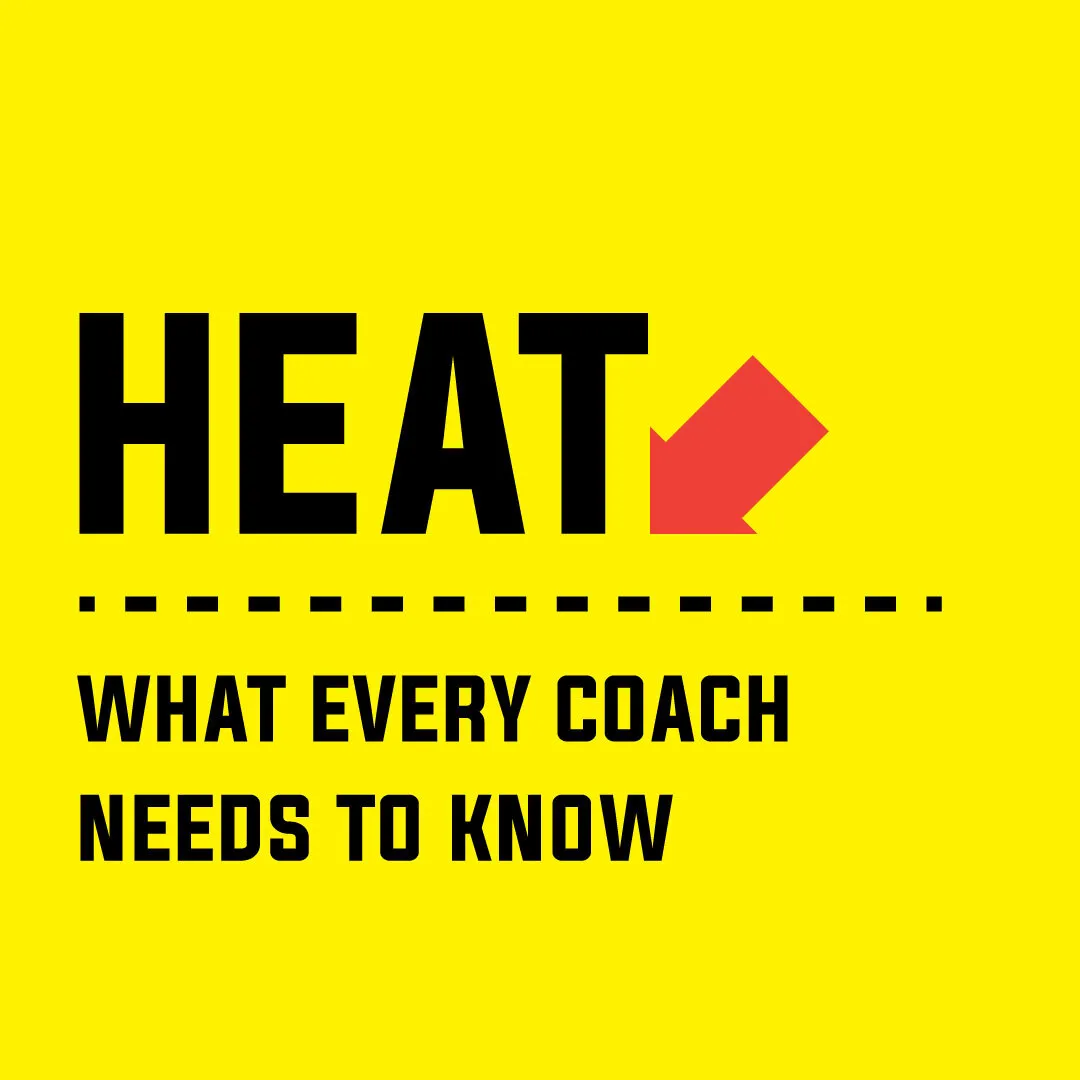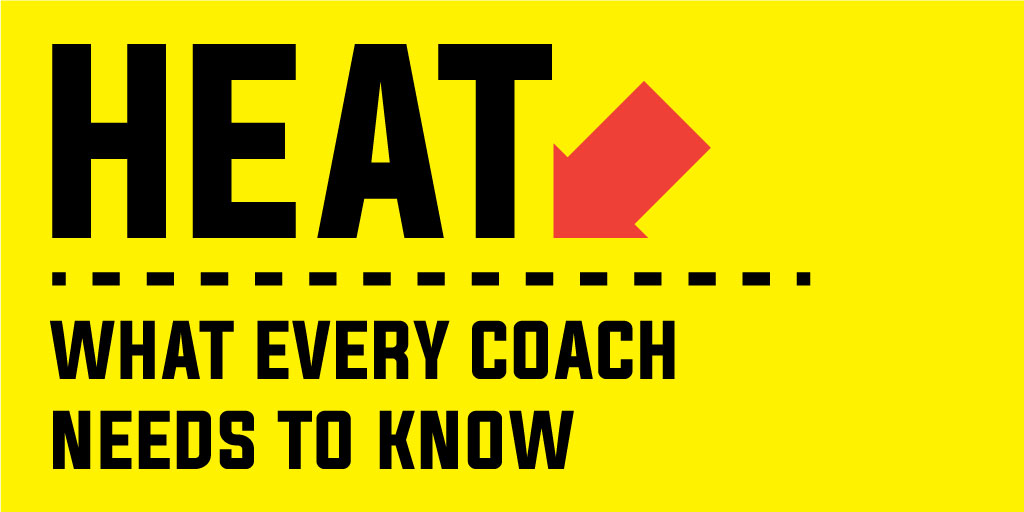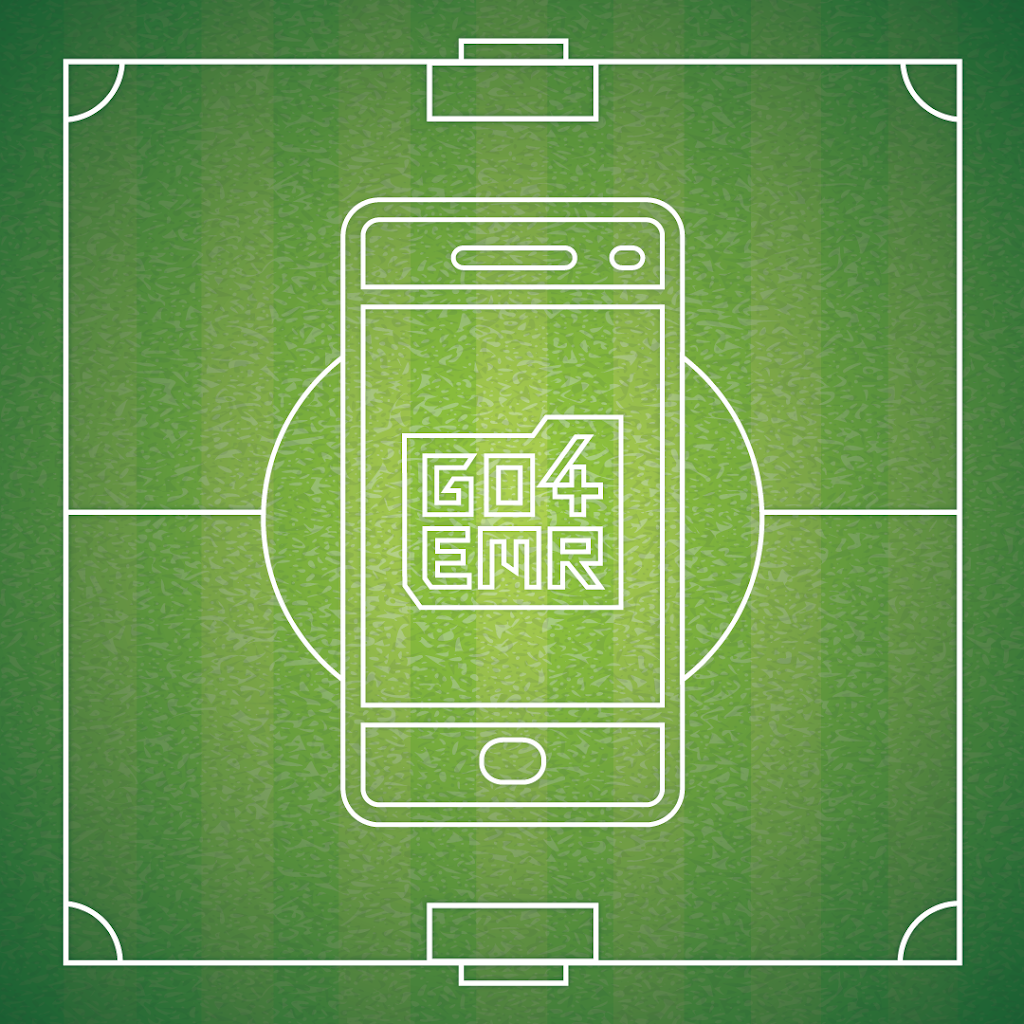HEAT – What every coach needs to know this summer


This summer is already record setting hot. Which means you need the tools to protect your players, your staff and yourself.
Exertional heat stroke (EHS) is one of the leading causes of sudden death in sport. However, it is 100% preventable and 100% treatable.
Exertional Heat Stroke (EHS): The two main criteria for diagnosing EHS are central nervous system (CNS) dysfunction—e.g. irrational behavior, irritability, emotional instability, altered consciousness, collapse, coma, dizziness—and a rectal temperature above 104°F immediately following a player collapsing.
PREVENT: Keep everyone safe by preventing a situation where EHS is likely to occur.
- Wet Bulb Globe Temperature (WBGT) is what matters:
- Rely on your AT to monitor the “wet bulb globe temperature”. Air temp, heat index and “feels like” measurements are not accurate enough to assess the situation. The WBGT accounts for the air temp, relative humidity, wind speed and solar radiation.
- Modify: The WBGT determines the activity level–when it’s too high, steps must be taken to mitigate the risk:
- Decrease activity time and increase rest time
- Move from artificial turf to grass
- Schedule activities early or late in the day when WBGT tend to be lower
- Find a shadier side of the field
- Run non-contact drills to allow players to take off their equipment
- Provide longer breaks so players can remove equipment and cool-off.
- Cancel! If it’s too hot to participate, it’s better to be safe than sorry.
PREPARE: Before your event, prepare for exertional heat illness.
- Communicate:
- Instruct parents/participants to pack extra cold water.
- Inform parents/participants that there will be extended breaks to cool down.
- Coordinate a plan with your athletic trainer. ATs are exertional heat illness specialists.
- Know the signs–see attached for full list.
- Life-Saving Equipment: Supply your athletic trainer with the tools they need to save lives.
- 10×10 Tent, Inflatable Pool Min. 150 Gallon Capacity, 10×10 Tarp, 40 Gallons of Ice, 40 Gallons of Water, Coolers for Ice, Coolers for Water, Rectal Thermometer
ACT: In the event of EHS, the protocol is COOL then TRANSPORT.
- Call 911 – Call EMS while the Athletic Trainer treats the patient
- Cool
- The goal is to decrease the person’s core body temperature as fast as possible by submerging them in ice water while keeping their head and neck above the water line. Water temp should be between 36oF – 50°F.
- Oscillate – You may be asked to help stir the water around the person to ensure that cold water is surrounding them at all times.
- Remove – When instructed, help the AT remove the patient from the water when their rectal temperature is between 101°F-102°F.
- Transport
- When the patient has been sufficiently cooled, transport them via ambulance to the nearest hospital for further assessment.
Need an athletic trainer? Go4 is a nationwide app/platform that connects teams and organizations with per diem athletic trainers for games, practices, camps, clinics and tournaments. For more information, or to find and hire an athletic trainer, visit go4.io
If you’re an AT looking to pick up a per diem shift or two, create your free Go4 Account
Are you an Athletic Trainer?
Join us!
From per diem shifts to full-time opportunities, AT resources, PLI, a free EMR and more, Go4 is the essential AT app. Sign up now!
"*" indicates required fields
Other articles you might like

What’s the deal with Standing Orders?
How do I get standing orders as an athletic trainer? Q: What are standing orders? A: Standing orders, aka medical protocols, establish the scope of practice for an athletic trainer. Under the direction of a physician, they are an overview of the specific skills that the AT is legally able…

AT Spotlight: Thomas Obergefell, Athletic Training from the Dugout
Name: Thomas Obergefell, MS, ATC, LAT Nickname: T.J. Alma…

Middle School / High School / College / Any School EMR – The Importance of Documentation
Go4’s in-app Electronic Medical Record We all know the reasons why it’s important to thoroughly document, but incase you forgot, here they are:…